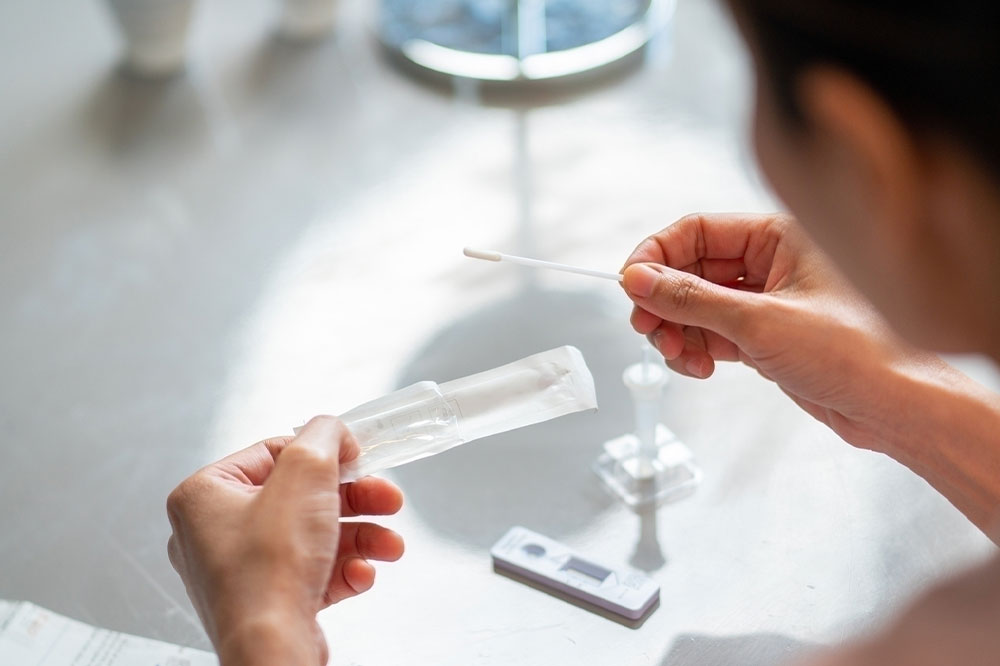
Things to know about rapid home testing
One of the best ways to stay safe from any viral disease is to practice social distancing, wear masks, wash your hands frequently, or use a sanitizer. But if you have used done these and still suspect the development of COVID-19, you may want to opt for regular testing. However, repeated testing in labs can be expensive, leading to an influx of at-home tests or rapid home tests. Let us understand how they work.
What are home tests?
Self-tests, at-home tests, home tests, rapid tests, or even over-the-counter (OTC) tests are popular COVID-19 tests that can be taken anywhere without the help of a health professional. These tests are done to detect any current infection in your immune system, regardless of whether you are vaccinated. Unlike the laboratory tests, which take days to get back, these home tests take only a couple of minutes to give the results, telling you whether you are carrying any infection. These home tests and preventive methods like vaccinating, social distancing, and sanitizing can help tremendously reduce the spread of COVID-19.
What is the right time to take the test?
You can take the test anytime and anywhere. However, there are certain circumstances which demand you do not skip taking the test at all. Here is the list of when you definitely should consider taking the test:
If you are experiencing COVID-19 symptoms
If you note any of the COVID-19 symptoms like flu, cold, cough, shortness of breath, and such, then it is important to take the test immediately to know if you are COVID-19 positive or not. The sooner you know, the sooner you can start treatment and also inform those in your social circle who may have come into contact with you recently.
If you were exposed to someone with COVID-19
If you were in contact with someone who tested positive for COVID-19 recently, the first step would be to isolate yourself and do a home test 5 days post exposure. In case you get a negative result, test one or two more times with a gap of 1 or 2 days to be sure of the result.
If you are likely to be in a crowded space
It is especially risky if the crowded space is indoors and where most people may not follow the right distancing protocols. You should do a test immediately before you leave for an event or preferably as close to the time of the event as possible. Doing so will let you know whether you are a COVID-19 carrier, and you can decide whether to skip the event or attend. You should also test yourself a couple of days after the event to ensure you did not pick up the infection from someone in the crowd.
People often worry about where they contracted the infection; however, it is equally important to be a more responsible citizen and always test before stepping out into the crowd to ensure you are not the carrier. Several people in the crowd could have low immunity or other high-risk factors, which may put them at risk due to one’s negligence.
What are the first steps if you test positive?
If you tested positive for COVID-19, there is no need to panic. It is crucial to consult with your healthcare professional and follow their instructions thoroughly.
Isolate yourself and stay at home for at least five days after the test.
Inform your close contacts to make sure they also do the testing.
Wear an N95 or KN95 mask if you are sharing the house with someone else.
Keep an eye on the symptoms and if you notice them getting worse, speak to a healthcare professional immediately.
If you are having any breathing troubles, get emergency care immediately.
How does one buy rapid home tests?
It is very easy to purchase these home tests; you can buy them online or even in pharmacies and retail stores. There are some private health insurers who may reimburse you for the tests bought; however, you will have to check with them first. Also, find out if there are any free tests available at the local health departments and if there is any community testing site, you can visit and ask them for a home kit. Depending on the location, they may or may not be free of cost.
Important note
It is essential to know that these home tests are convenient and easy; however, they may not always be a hundred percent accurate. It is advised that when you do take a test and it shows negative, always rely on a second test also to give you a more accurate result. That said, they may not be 100% accurate, but they still are FDA recommended as they come close to accurate results and can be relied upon with care.




